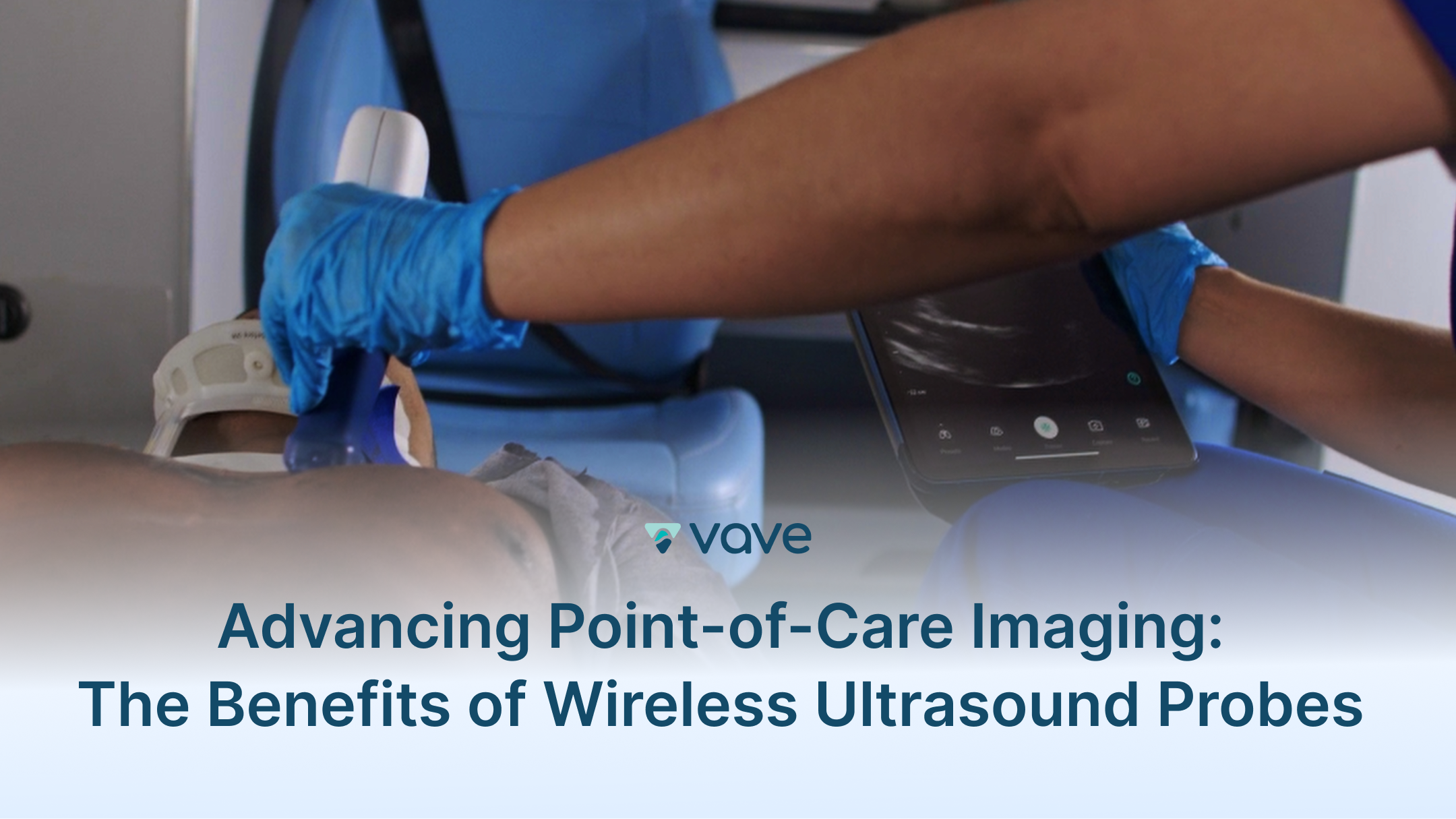Research shows that point-of-care ultrasound (POCUS) can accelerate diagnosis, reduce costs, and avoid unnecessary invasive procedures. However, physical bottlenecks – including the size, portability, and cost of ultrasound machines – have restricted the technology’s potential.
Wireless handheld devices are eliminating those bottlenecks – and unlocking a new level of flexibility, usability, and patient-centric value for ultrasound. This article explores not only how these devices are helping imaging evolve, but why it is so important that clinicians join the movement.
Traditional Ultrasound Limits Point-of-Care Potential
Traditional machines are large and bulky, requiring a cart and a separate operating screen to work. This creates two foundational problems:
- Resource Constraints: Cart-based machines often cost more than $100,000 each. Clinicians are often forced to share a single machine, creating scheduling issues, imaging delays, and ever-growing backlogs.
- Limited Accessibility: Cart-based systems are impractical for mobile care or remote healthcare delivery. So patients in areas that are already underserved miss out on high-quality, real-time imaging.
The clinical impact of these two limitations may affect clinical workflows:
- Emergency departments struggle with immediate trauma imaging when POCUS machines are unavailable
- Rural clinics lack the infrastructure to support traditional ultrasound systems
- Time-sensitive scenarios (cardiac arrest, sepsis, trauma) face dangerous imaging delays
Why Wired Handheld Devices Still Present Problems
Handheld devices emerged as a potential solution to traditional cart-based systems’ limitations. Miniaturization enabled devices to use the same imaging technology – but fit neatly into a clinician’s pocket.
This made POCUS significantly cheaper, easier to use, and far more portable—unlocking several clear benefits:
- Faster Triage: The devices connect via WIFI in seconds, enabling immediate triage in trauma, cardiac arrest, or sepsis.
- Simpler workflow: Clinicians no longer need to coordinate with imaging departments or wait for patient transport to obtain essential diagnostic information.
- Greater Patient comfort: Bedside or in-transport scans spare patients the stress of moving to imaging rooms.
But there’s a catch: these solutions use a short wire to connect the probe to a smartphone, where images can be viewed, analyzed, and shared.
The problems were clear:
- Wires can harbor pathogens if not disinfected properly
- Wires get in the way during exams and force clinicians into awkward positions
While handheld devices have made POCUS more accessible, many users find that going wireless opens up even greater possibilities.
How Wireless POCUS Unlocks Imaging Without Boundaries
Wireless ultrasound devices may help reduce some of the physical and logistical barriers that have historically limited point-of-care imaging. Devices like Vave Health’s wireless probe delivers all the benefits of wired devices, with several extra benefits:
- True mobility: Clinicians can scan in any environment - patient homes, rural outposts, disaster zones, or ambulances - without worrying about cords or carts.
- Easier Use: Cordless design lets clinicians work more naturally and reduces strain
- Increased Patient Safety: Wireless devices reduce contamination points and simplify disinfection, supporting infection control protocols.
Benefits Comparison: Wireless vs. Cart-Based Ultrasound
Benefits Comparison: Wireless vs. Cart-Based Ultrasound
| Benefit Category |
Traditional Systems |
Wireless POCUS |
| Mobility |
Limited to dedicated rooms |
Scan anywhere—home, ambulance, clinic |
| Setup Time |
5-15 minutes |
Under 30 seconds |
| Infection Control |
Complex cable disinfection |
Simplified cleaning protocols |
| Patient Comfort |
Requires transport to imaging |
Bedside or familiar environment scanning |
| Emergency Response |
Limited availability |
Immediate deployment capability |
Unlock Wireless Imaging with Vave Health
Vave Health is the world's first wireless, handheld, whole-body ultrasound with a single PZT transducer. With the combination of high-quality imaging and the exclusive Vave POCUS platform, clinicians are able to:
- Create whole body scans in any setting
- View, analyze, store, and share images instantly
- Includes encryption to support data security
- Seamlessly integrate imaging with existing PACS
Want to see it in action?













.webp)
.svg)
.webp)
.svg)





.svg)

.svg)
.svg)
